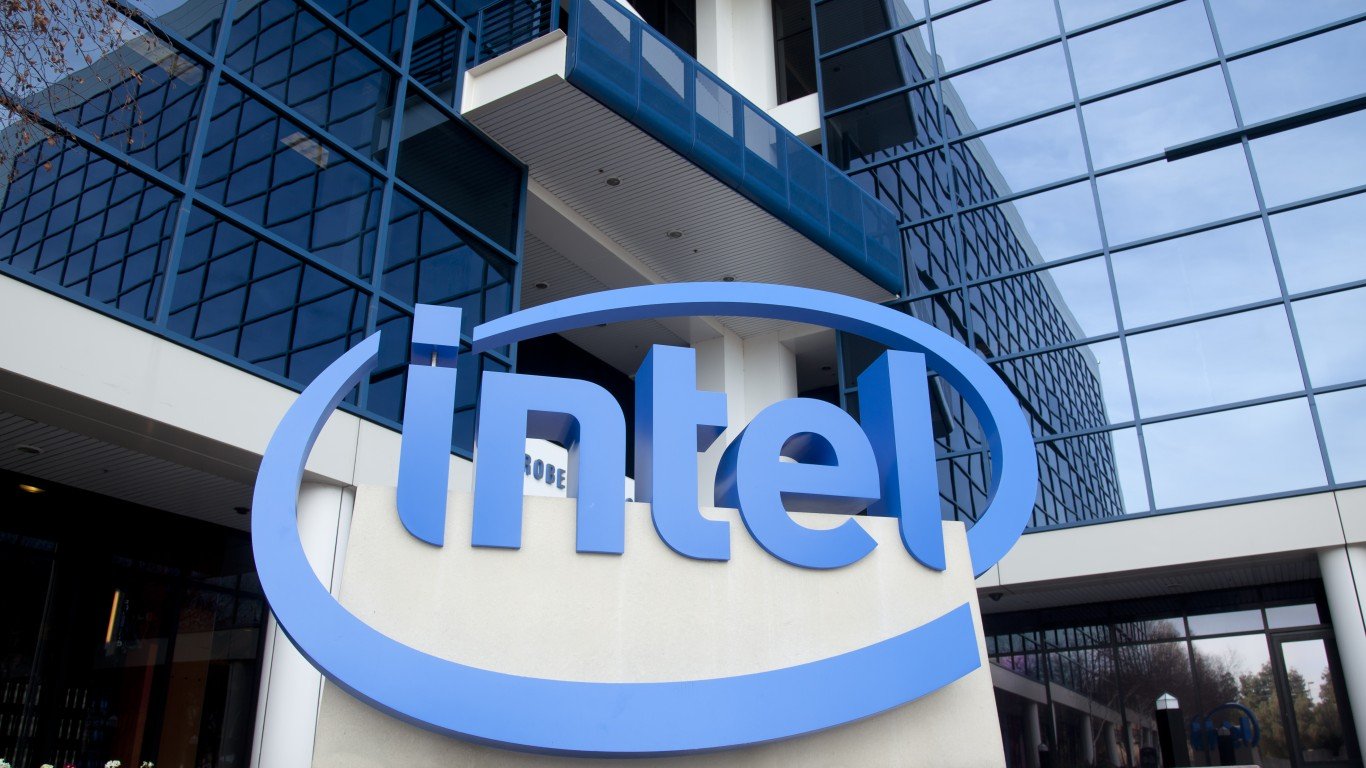

Was Monday afternoon’s sharp rise in equity prices the real thing or just a head fake? Judging by Tuesday morning trading, it appears to be the latter. IBM got a nice bump after reporting a beat on both the top and bottom lines, and the stock traded up by around 2.7% shortly before noon on Tuesday. Steel Dynamics also scored a twin beat, but the stock traded down by 2.2%, even though guidance was strong.
As for companies that reported before markets opened Tuesday, American Express beat both profit and revenue estimates and traded higher by about 9.2%. GE beat on profits but missed on revenue and issued disappointing guidance. The stock got hammered and traded down about 6.5% Tuesday morning.
We already have previewed four more also scheduled to report results after Tuesday’s closing bell (Capital One, Microsoft, Navient and Texas Instruments) and four more reporting before the opening bell on Wednesday (Abbott Labs, AT&T, Boeing and Freeport-McMoRan).
Here is a look at four firms scheduled to report results after markets close on Wednesday.
Intel
Shares of Intel Corp. (NASDAQ: INTC) have struggled since reaching a 12-month high in early April. Since then, the stock is down more than 24% and the 12-month decline is more than 8%. The chipmaking giant needs to figure out a way to regain market share. So far, executive pronouncements to that effect have had little impact. Intel has released an aggressive product roadmap, but its execution will tell the tale.
Of 42 analysts covering the stock, just 11 have a Buy or Strong Buy rating on the stock. There are 22 Hold ratings, and the other nine are Sell or Strong Sell. At a recent price of around $50.70 a share, the implied upside based on a median price target of $55 is about 8.4%. At the high target of $80, the implied upside is 57.8%.
Fourth-quarter revenue is forecast at $18.36 billion, which would be up 1.5% sequentially but down about 8.1% year over year. Adjusted earnings per share (EPS) are forecast at $0.91, down nearly 47% sequentially and 40% lower year over year. For the 2021 fiscal year, Intel is expected to report EPS of $5.29, down 0.3%, on sales of $73.76 billion, down about 5.3%.
Intel stock trades at about 9.6 times expected 2021 EPS, 13.6 times estimated 2022 earnings of $3.75 and 12.9 times estimated 2023 earnings of $3.93 per share. The stock’s 52-week range is $47.87 to $68.49. Intel pays an annual dividend of $1.39 (yield of 2.67%). Total shareholder return over the past year is negative 5.65%.
Lam Research
Semiconductor equipment maker Lam Research Corp. (NASDAQ: LRCX) posted its 12-month high earlier this month. Since then, the stock has dropped about 5% and the 12-month share price gain has been sliced from more than 27% to just over 6%. The sector is still expected to perform well, with announcements of new fabs scheduled for construction over the next 12 to 18 months. A recent pullback in share prices looks like a revaluation move by investors rather than an abandonment.
Of 27 brokerages covering Lam Research, the stock is rated as a Buy or Strong Buy by 17 and at Hold by the other 10. The consensus price target on the stock is $750, and at a recent price of around $589.50, the upside potential is 27.2%. At the high target of $869, the upside potential is about 47.4%.
Second fiscal quarter revenue is forecast at $4.41 billion, up 2.5% sequentially and about 27.4% year over year. Adjusted EPS are forecast at $8.50, up 1.7% sequentially and 40% year over year. For full fiscal 2022, analysts currently expect Lam Research to report EPS of $34.43, up 26.2%, on sales of $17.76 billion, up 21.4%.
Lam Research stock trades at about 17.2 times expected 2022 EPS, 15.9 times estimated 2023 earnings of $37.20 and 14.6 times estimated 2023 earnings of $40.52 per share. The stock’s 52-week range is $481.05 to $731.85. The company pays an annual dividend of $6.00 (yield of 0.99%). Total shareholder return over the past year is 4.8%.
Las Vegas Sands
Now that Las Vegas Sands Corp. (NYSE: LVS) has gone all-in on its properties in Macau, and the Chinese government looks ready to approve a new licensing agreement with casino operators there, the company’s stock has bounced back from a 12-month low posted in December. The company launched its online gaming team in July and a report on progress would be welcomed by investors. Over the past 12 months, the stock has dropped about 18%.
Of 16 analysts covering the stock, 10 have rated the shares a Buy or Strong Buy. Another five have a Hold rating on the stock. At a share price of around $44.40, the upside potential based on a median price target of $51 is 14.9%. At the high price target of $66, the upside potential is 48.6%.
Analysts have a consensus fourth-quarter revenue estimate of $1.1 billion, up 28.6% sequentially and down 4.3% year over year. The consensus also calls for a loss per share of $0.22 in the quarter, less than half the prior quarter loss of $0.45 per share and less than the year-ago loss of $0.37 per share. For the full fiscal year, Las Vegas Sands is expected to post a loss per share of $1.17 compared with a loss per share of $2.12 a year ago. Sales are forecast to rise by 22.3% to $4.42 billion.
Las Vegas Sands stock trades at about 47.1 times estimated 2022 earnings of $0.94 and 17.7 times estimated 2023 earnings of $2.50 per share. The stock’s 52-week range is $33.75 to $66.77, and it does not pay a dividend. Total shareholder return over the past year is negative 16.2%.
Tesla
Shares of Tesla Inc. (NASDAQ: TSLA) reached an all-time high in early November. Since then, the stock price has dropped by about 25%. Even so, the shares are up about 9% for the past 12 months. Tesla trades more like a tech stock than an automaker, and the tech stocks have been pummeled recently, primarily on concerns about their high valuations at a time when the Federal Reserve is expected to tighten monetary policy. Investors will want to hear more about growth from new plants in Germany and Texas, along with some firm news about the Cybertruck.
Sentiment toward Tesla continues to tilt slightly to the downside. Of 35 analysts covering the stock, 15 rate the shares a Buy or a Strong Buy, but 11 rate the stock a Hold, six rate it at Strong Sell and three more have Sell ratings. At a share price of around $922.00, the implied upside based on a median price target of $1,039 is 12.7%. Based on a high price target of $1,580, the upside potential is 71.3%.
Analysts expect Tesla to post fourth-quarter revenue of $16.65 billion, up 21% sequentially and 55% year over year, and EPS $2.36, up 26.6% sequentially and 195% higher year over year. For the full 2021 fiscal year, current estimates call for EPS of $6.46, up 188%, on sales of $52.65 billion, up 67%.
Tesla stock trades at about 141.5 times estimated 2021 EPS, 94.2 times estimated 2022 earnings of $9.71 and 75.2 times estimated 2023 earnings of $25.27. The stock’s 52-week range is $529.49 to $1,243.49. Tesla does not pay a dividend. Total shareholder return over the past year is 4.3%.
Essential Tips for Investing: Sponsored
A financial advisor can help you understand the advantages and disadvantages of investment properties. Finding a qualified financial advisor doesn’t have to be hard. SmartAsset’s free tool matches you with up to three financial advisors who serve your area, and you can interview your advisor matches at no cost to decide which one is right for you. If you’re ready to find an advisor who can help you achieve your financial goals, get started now.
Investing in real estate can diversify your portfolio. But expanding your horizons may add additional costs. If you’re an investor looking to minimize expenses, consider checking out online brokerages. They often offer low investment fees, helping you maximize your profit.
Thank you for reading! Have some feedback for us?
Contact the 24/7 Wall St. editorial team.
 24/7 Wall St.
24/7 Wall St.


